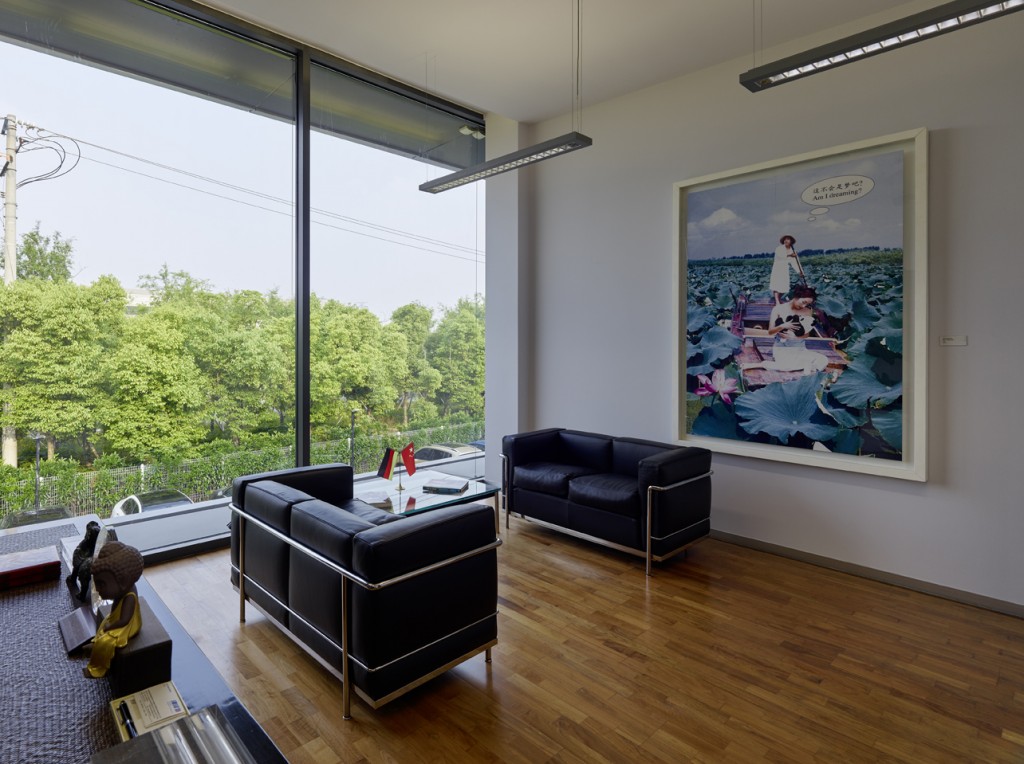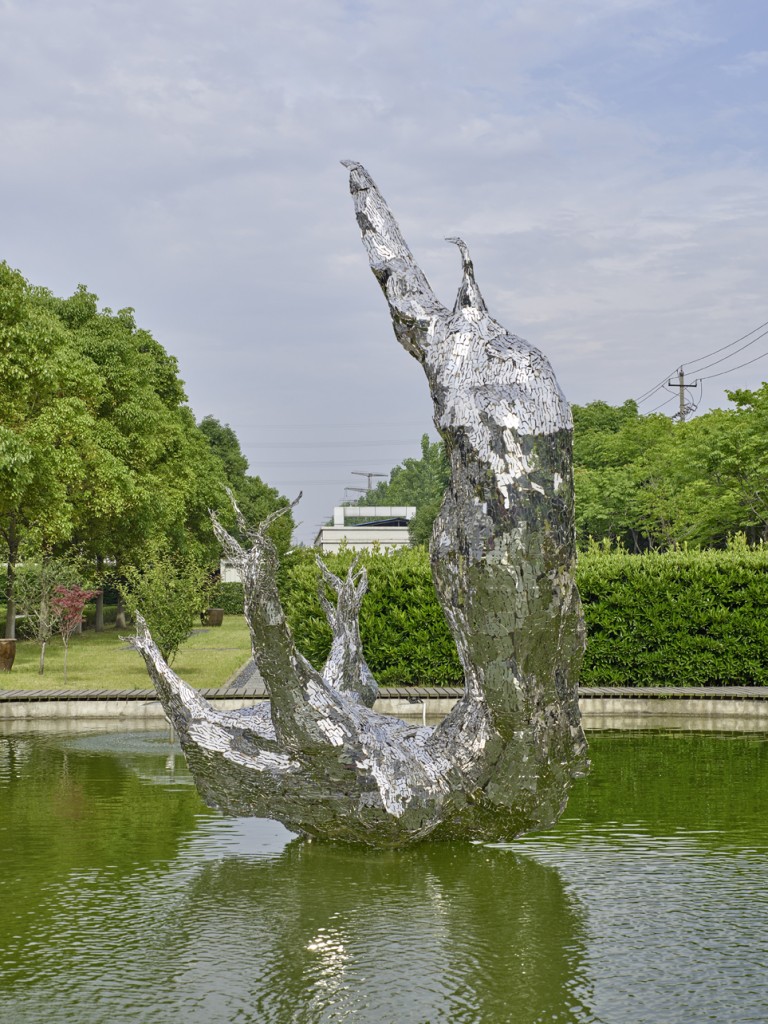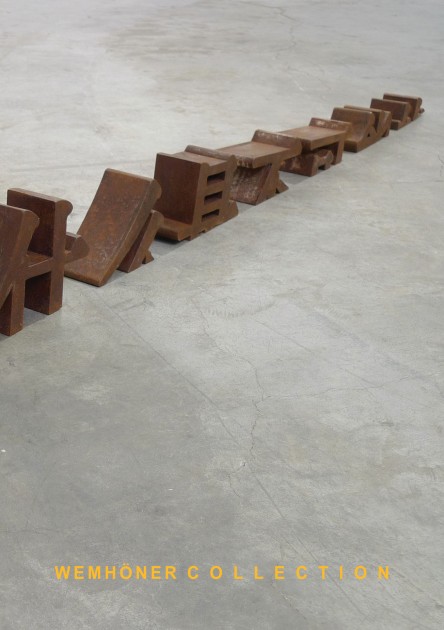To celebrate the 10th Anniversary of Wemhöner Machinery Co.,Ltd, collector Heiner Wemhöner will be revealing his commissioned piece by Beijing artist Li Hui on June 8th at the Changzhou-based company. It will be a first for the city of Changzhou for an entrepreneur and art collector to commission a piece specifically for a manufacturing site. Heiner Wemhöner, the CEO of Wemhöner Surface Technologies, an operating manufacturing facility in Herford Germany and China since 2005, developed a love for Chinese contemporary art on account of his frequent business travels to China, allowing him to develop strong ties with local gallery owners and artists. Wemhöner’s idea is to share his passion for art as well as his collection. Towards that end, his artworks are exhibited in both of his company offices, reflecting his philosophy to generate a special work environment. The commissioned work, designed by Chinese artist Li Hui is a four-meter tall outdoor stainless steel sculpture titled “Eternity” designed to represent Changzhou’s city and its history. Declaring this may not be his last outdoor commission, Wemhöner additionally has a long history of engagement with public museums along with public art projects in Herford, he has donated several times to the city municipal, plus set up works in public spaces for public enjoyment.
The high polished steel sculpture is now laid in the middle of a scenic pond near the factory’s premises and will be revealed to the public on Monday 8th June .
To commemorate this special event, Larry’s List brings you another exclusive video interview as we chat with the collector about his fascination with Li Hui’s work and whether Changzhou can earn a place on the art map.
When did you start collecting art and what were the reasons? Do you still remember the first artwork you purchased and do you still own it?
At the end of the 1980s I made occupational travels through Italy and visited many galleries. The first works I purchased were colourful Italian oil paintings and I still own them today, but I believe that I wouldn’t buy these pieces today.
Today you are focusing on Chinese artists, which is kind of unusual for a German collector. When did you choose to collect Chinese artists?
I am not completely focused on collecting Chinese artists but Chinese artists do form a major part of my collection.
Since 2004 I was professionally active in Shanghai. During this time I got to know Lorenz Helbling, the founder of Shanghart and I discovered my love for Chinese contemporary art. Even today I visit Lorenz’s gallery whenever I have time and I am very happy that I met him during this time.
Are you more focused on renowned or emerging artists?
I don’t really have a focus. I collect paintings, sculpture and photography. 10 years ago, I would have answered that I do not collect photography, but things change. Today, a major part of my collection is photography and I also started to cautiously collect videos and installation art. Artworks have to affect me, no matter which medium they belong to.
When do you start to see yourself as an art collector?
I started to see myself as a collector when I began purposely travelling to art fairs and art events. Today, I trace many artists and gallerists and maintain contact with them. Over time, I built rapport with various artists and I also support them financially to realise major projects.
Many collectors are presenting their collection online. Are you planning to focus more on communicating your collection online?
A friend of mine, Lutz Teutloff, is presenting his collection online. I belong to a generation of collectors who is not totally connected to the internet. I also couldn’t imagine to virtually “walk” through an exhibition online. In the end, there is a difference between looking at an artwork in the flesh and seeing it on the internet. For me, viewing art is also linked to visiting a city and getting to know the culture of a region.
When I decided to make the exhibition in Berlin, I noticed that there are many coherences and frictions between the artworks in my collection. In my opinion, this can only happen to you if you are standing in a room and looking at your artworks in the flesh.
On 22nd of March 2014 you opened an exhibition in Berlin, which presents your collection. Why did you choose to show it in Berlin and what makes Berlin so attractive for art collectors?
Berlin is the cultural capital of Germany. Many international artists are living and working in Berlin and also many high-level galleries are situated in Berlin.
Since I had the possibility to show my collection in a large space in Berlin, I chose to seize the opportunity. Most parts of my collection are located in a depot, which is why I published three books on my collection. I am really glad that I can now show my collection in an exhibition space.

Some gallerists and dealers told us that they are not traveling to art fairs anymore and thus use other channels to sell their artworks (e.g. internet). How do you, as a collector, see the future developments of art fairs?
I agree. There are definitely too many art fairs. During the last few years, I was a regular guest at Art Basel, Art Basel Hong Kong and Art cologne. I have also been to the FIAC Paris and the Paris Photo. In the end, I am very selective regarding the attendance of these art fairs.
Our analysis has shown that compared to other collector markets like China or the US, German collectors do not seem to be willed to pay as high prices for blue chip artworks than other markets. Do you think this is true? Do you think that this progress is linked to different mentalities?
I think that the phenomenon is linked to the relationship between the collector and money. In the US, many investment bankers ran into money quickly and on this account they are set to invest vast amounts of money into art. By contrast, German collectors have different relations to money.
Also, many collectors are working together with museums. Can you describe your involvement in the MARTa Herford?
I am a foundation member of the MARTa Herford because the museum was looking for a private-public partnership. Hence, I own a minor share of the MARTa and I am also the president of the circle of friends of the MARTa. Moreover, my foundation is supporting the museum and the city. We initiated a price and we also donated a sculpture to the city.
With regard to the relationship of private collectors and public museums: do collectors assume a certain responsibility by presenting art to the public?
I think there is a responsibility. Nevertheless, a public museum has a different role compared to a private collector. A private collector spends his own money whereas a public museum uses public funding to acquire artworks.

A booklet presenting the sculpture as well as the artist Li Hui and Wemhöner’s collection is now available:

For more information:





